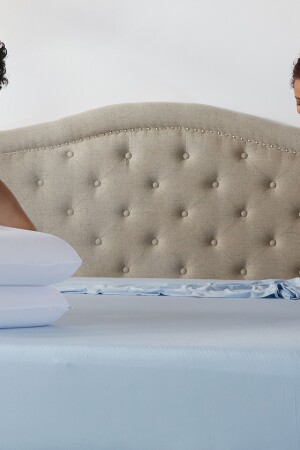At Mattress Firm, we know a thing or two about sweet dreams, but our friends at Orkin Pest Control are the experts on real-life nightmares – bed bugs. Mattress Firm teamed up with entomologists from Orkin to bring you a three-part series on bed bugs. The following post, the second in our series, is brought to you by Entomologist and Technical Director of Orkin's Midwest Region, John Kane.
While it may feel like ignorance is bliss when it comes to these creepy-crawlies, the best way to protect yourself is education. Learn more about these pests while you're traveling.
When you finally take a well-deserved vacation, you want to bring home a tan – not bed bugs. Unfortunately, hotels, motels and even vacation rental homes are prime breeding grounds for these blood-sucking bugs, who spread easily and are difficult to eradicate (unless you're a pro).
Bed bugs travel from vacation homes to permanent homes by hitching a ride aboard travelers' clothing and suitcases. Without knowing it, many travelers introduce bed bugs into their own bedrooms after trips. But fear not – for the intrepid Mattress Firm traveler, there's a simple way to avoid taking bed bugs home with you: just S.L.E.E.P. Here are the five action steps Mattress Firm wants you to get used to using each time you travel:
S: Survey
Whether you're staying at a 5-star hotel or a vacation home rental, be sure to survey the bed area for signs of a bed bug infestation. Although you may not spot these nocturnal creatures, you may see dark brown or red spots: signs of bed bug excrement. These tiny rust colored stains may be accompanied by yellow skins that adolescent bed bugs shed as they grow. If present, they'll be found in out-of-the-way cracks and crevices around the room – not just on your bed.
L: Lift and Look
Begin your search by pulling back the linens, box spring, bed skirt, and blankets to inspect around the box spring and mattress. You should also lift the mattress and inspect beneath it, in addition to getting down low to check under the box spring, beneath the sheets and by the mattress tag. Hiding spots may also include underneath the bed frame, on/around/behind the headboard and footboard, or in crevices of the furniture.
And remember: the name “bed bugs" can be misleading, so don't just limit yourself to the mattress. Bed bugs could be in the crevices of nightstands, picture frames or even alarm clocks. In fact, during the day, they could be located anywhere within a 1.5 meter radius of the bed.
E: Elevate
Even if you don't spot any tell-tale bed bug signs during your search, practice preventative action. Never leave your suitcase on the floor; instead, elevate your suitcase onto a surface, preferably near the door entryway or within the restroom. Although luggage racks can also be used, be careful – they're known to also harbor these pests.
Then, consider living out of your elevated suitcase. Sure, you want to feel at home in your vacation rental, but by moving your belongings into dresser drawers or a closet, you may actually be moving your clothing into bed bugs' territory.
E: Examine
When repacking, carefully examine your luggage and your clothing – particularly clothing that was worn to bed – for any signs of bed bugs. Once home, Orkin recommends immediately unpacking your clothes , slowly reinspecting your belongings, and then placing them immediately into the wash. If you're truly concerned, you could consider unpacking in the garage or utility room, not the bedroom, to prevent the spread of any possible bed bug hitchhikers.
P: Place
If you need to know how to get rid of bed bugs, they are unable to withstand heat above 113 degrees Fahrenheit, so place all clothing from your trip directly in to the dryer for at least 90 minutes (it may take more than one cycle). The hotter the temperature, the better. While your clothing is drying, place your suitcase in a basement, garage or attic. If bed bugs are in that suitcase, it's less likely they'll find and invade your bed.
Don't let the threat of bed bugs prevent you from your enjoying your vacation. Mattress Firm wants you to S.L.E.E.P tight during your travels. By following these five simple prevention tips, you'll ensure you only bring home what you packed. Okay – and maybe a few souvenirs.
Stay tuned for Part Three of our three-part series.
John Kane is a high-level problem solver with more than 12 years of experience in the pest control industry. He has a Master's Degree in Entomology from the University of Illinois Urbana-Champaign, where he also worked on several research studies, taught graduate-level courses, and co-wrote the 10th edition of an integrative biology textbook. John is an expert in sensitive environments like hospitals, food facilities, and museums, as his love of biology drives him to find precise solutions to tough situations.










